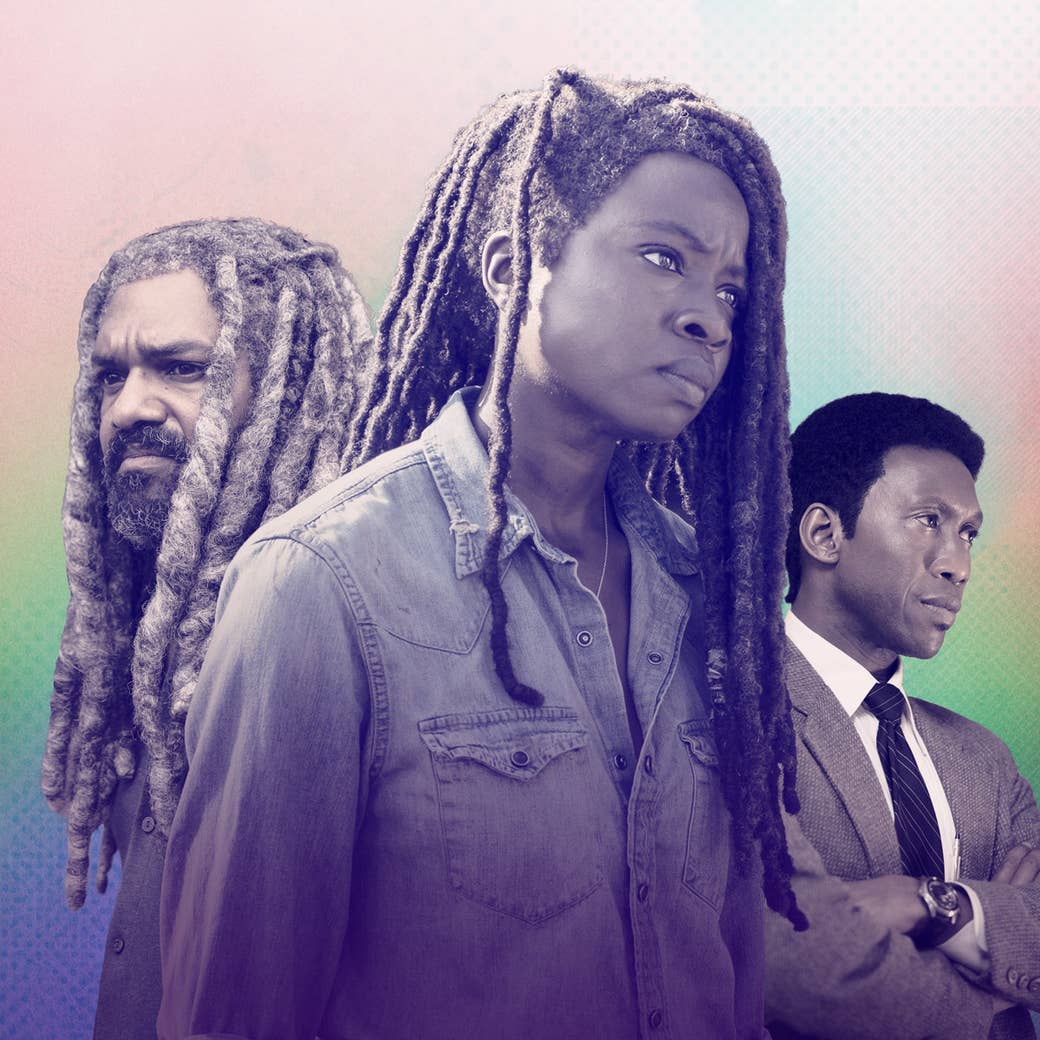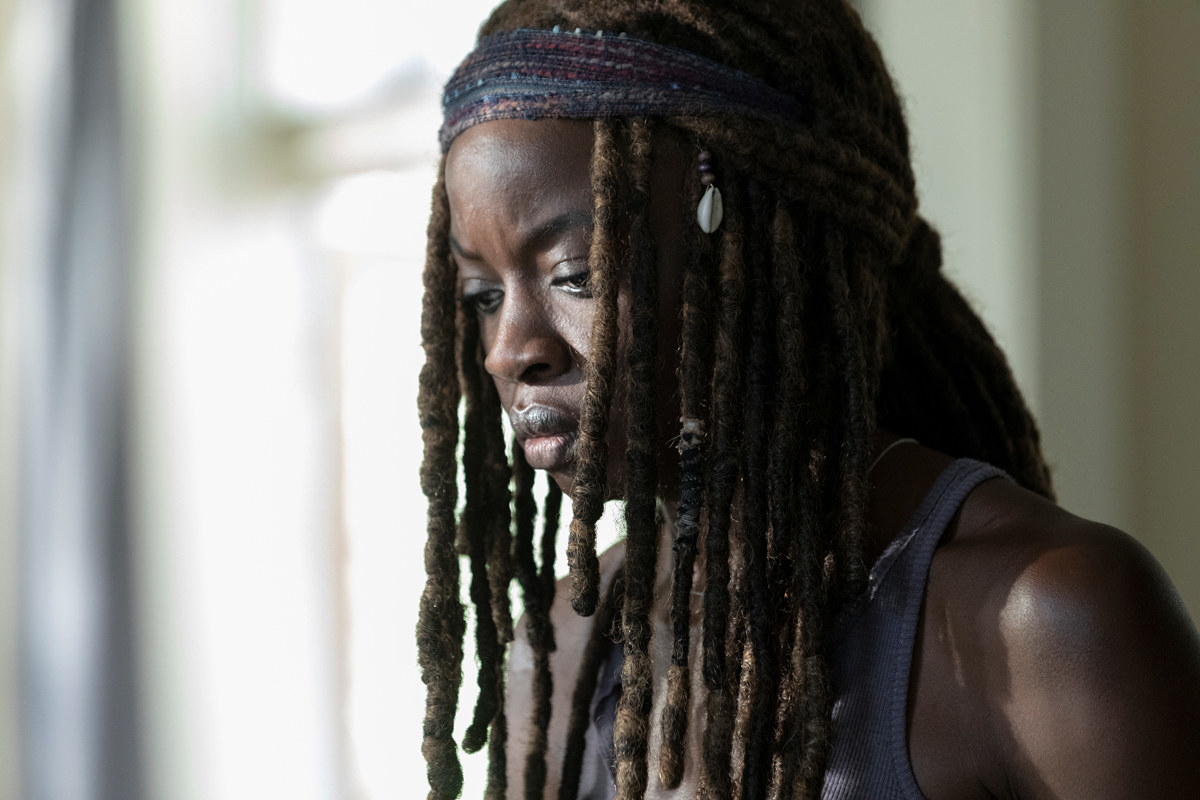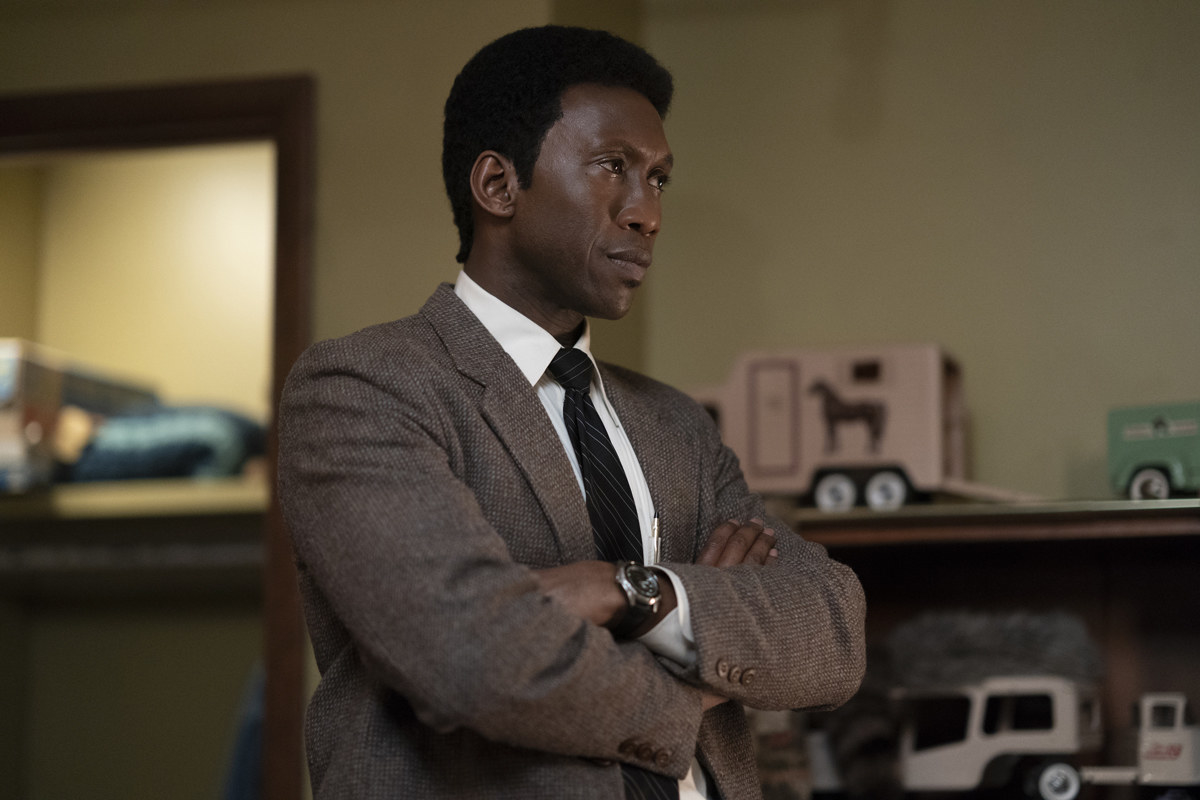
The thing about wigs is, when they’re good they invite no discussion. None. You do not need to mention them. No matter the texture, they sit atop a head with a regal grace. Good wigs are merely…correct. They are perfectly at one with the wearer (heaven forfend a wig upstages a performer!), folding seamlessly and whisper-soft into the landscape of their universe. Good wigs are like air: all around us at all times.
But bad wigs? To extend the metaphor, bad wigs are the absence of air. They are the tangible equivalent of feeling body processes shutting down, one by one. A bad wig pulls focus like a starlet angling for the limelight. Bad wigs are the noxious fumes that crowd out everything else; they slowly fill the frame until that’s all you can focus on, that distinct lack of life-sustaining oxygen. You clutch at your throat, urging your airways to function, dammit. But there is no respite. All there is is the Bad Wig.
In 2018, we were “blessed” with a veritable motorcade of bad wigs onscreen. Down the pike they came: Henry Cavill’s gummed-on brassy silver mess, which (allegedly) transformed him into Geralt in the soon-to-arrive Netflix adaptation of The Witcher; Michelle Williams’ stiff honey-blonde horror in Venom; the scraggly gray monstrosity Melissa McBride was forced to wear after a six-year time jump on AMC’s The Walking Dead. The list goes on; we were replete with bad wigs this year.
What does it mean in our world when a man as handsome and square-jawed as Henry Cavill is rocking a wig that looks like it was stuck on ineptly with a glue stick from Michaels?
Once you see bad wigs — and yes, they are all over film and TV — you find yourself thinking about them and what they mean. When a bad wig occurs in fiction, it is not beholden only to the universe of its origin. As viewers, we imbue the wig with meaning from our own lived experiences and reinterpret the character based on our own realities. What does it mean in our world, for example, when a man as handsome and square-jawed as Henry Cavill is rocking a wig that looks like it was stuck on ineptly with a glue stick from Michaels? It might mean that the wig is bad on purpose, as a sort of nod to the period or the enterprise (see FX’s spy thriller The Americans, which sadly ended this year). Or it might mean this was an unfortunate error by the costume department — essentially, merely one bad wig, because even wig-makers and -fitters on big-budget projects have off days, brought about by any number of outside factors.
There are bad wigs, but then there is the Bad Black Wig (which is distinct from any old bad wig), because being black in the make-believe of Hollywood is a state of being that is not wildly dissimilar to being black in the real world — the circumstances and outcomes of marginalization are very real. And so even the wigs on our heads have a different heft to them: A bad wig placed atop the head of a black performer might mean nothing, or it might be a symptom of something larger. What does it mean that the wig that Danai Gurira wears as Michonne on The Walking Dead didn’t change (except to become even more weather-beaten over the course of multiple seasons)?
It might mean nothing at all, other than a “good enough” attitude (something every single one of us has succumbed to at one time or another, to be fair). Or, a bad black wig could also be betraying the oft-documented casual recklessness and disregard for the first-person reality and interiority of black life — a disregard that is arguably as American as apple pie. Nowhere is this more apparent than in the realm of popular political discourse, where vocal alignment with “smart” black voting habits is often positively received, never mind how accurate it is in real life. Everyone wants to have a black friend, someone to point out as a cosigner on their wokeness. It doesn’t matter if it’s just for performance.
The bad black wig onscreen, then, is a handy visual metaphor for the lack of care for the lives and motivations of black people in real life. It is a mirror reflection of a society that understands black people as barely sentient props, in place only to serve a grander narrative without thought to their own fates.
It could be either of those reasons. Or both.

The Walking Dead’s Michonne (no last name — still a red flag all these years later) is a katana-wielding, walker-decapitating certified badass. She is also in possession of one of the worst-looking heads of hair on TV. When she was introduced at the end of Season 2 in 2012, she appeared as a mystery figure — hood up and face obscured — but by the third season’s opening episode, had been cast in the form of Danai Gurira. The Michonne of Robert Kirkman’s comic books turned up in Issue 19 (with an instant classic of a cover) with medium-length locs that changed length and style over the years.
TV Michonne turned up with an ebony-black wig that was…fine. In the six years since, that wig deteriorated at a rate of knots, stagnating in length (locs, being hair, tend to grow), and getting increasingly and randomly sun bleached and progressively threadbare, until it exposed an alarmingly patchy scalp landscape, seemingly held together by prayer and a selection of oddly placed headbands. It is a bad wig. In this ninth season, the powers that be have reconfigured it — an apparent “refresh” designed so it appears to be cropped low on one side (thank heaven for no more headbands, though!). In doing so, they have only forced an unfortunate hairline upon one of the most beautiful famous women in the world. It is barely an improvement — it draws an incredulous eye every time. Khary Payton, who plays Ezekiel in a salt-and-pepper locs wig, is also stricken by this hairline problem. The fact that the show shoots in and near Atlanta — a mecca of black hair and hair pieces — is a particularly bitter detail to swallow.
The bad wig becomes the symptom of a greater malady, in which the political, visual weight of a black character is overemphasized while their humanity is under-considered.
Of course, Michonne is hardly the only character on that show to be cursed with a bad wig. Carol’s Season 9 wig makes Melissa McBride look like Legolas’s aged great-grandmother, and who could forget Heath (Corey Hawkins), he of the cornrow wig that was reminiscent of Shemar Moore’s now iconic accursed hairpiece in Diary of a Mad Black Woman (2005)? There is something, though, about both the status (by this time a colead) and longevity (six years and counting) of the character of Michonne (on what was once the biggest show on TV) married to such carelessness that makes me tense up every time I see her.
Michonne is a character like any other on the show, of course, but she is also a symbol, both in the universe of The Walking Dead and in the world at large. Michonne is iconic: the almost-samurai with the locs swinging as she slices and dices her way through a dystopia. She is the warrior who survived the apocalypse at great personal cost, after all, and her early scenes are full of snarls and grunts and bared teeth. Her survival in the show is marked, considering how so many black male characters were briskly dispatched, but her badassery was also a sort of cloak for the survival of the rest of Team Family: In looking out for herself, she looked out for everyone, and a lot of fans felt the same way.
When she was paired romantically with Rick Grimes (Andrew Lincoln), a sizable chunk of the fandom mourned what they saw as the “loss” of her badassery — love, they argued, would make her less effective as a persevering survivor. Michonne the Badass (in her terrible wig). Michonne the Symbol (in her terrible wig). So enamored of the image and idea of the emotionless, melanin-rich samurai with locs, her interiority becomes a nonfactor; the bad wig becomes the symptom of a greater malady, in which the political, visual weight of a black character is overemphasized while their humanity is under-considered.

But wait, there’s more. Because Michonne’s road is far from lonely. Consider the dread-inducing helmet sitting on the head of Maria Rambeau (Lashana Lynch) in the publicity stills and trailer for Captain Marvel. The surname suggests she will likely be a pivotal supporting character to Brie Larson’s Carol Danvers/Captain Marvel; she deserves better. Think, also, on the hot pink–and-angry-with-it exclamation framing Anna Diop’s otherwise flawless face in DC Universe’s TV show Titans. Diop, who plays Tamaranean Kory Anders, is delivering a really great performance in a surprisingly engaging show and deserves to be cast in whatever genre she wishes to turn her hand to. But that wig, though… And to prove to us that even Oscar-winning actors get no breaks when it comes to the bad black wig, there was the trailer for the third season of HBO’s True Detective, starring Mahershala Ali in an atrocious period (what period?!) wig. Does no one care? Is that it?
I wager it must be part of it, surely. On these projects, almost all of which have multimillion-dollar budgets, the cost of a good loc/Afro/cornrow wig must be negligible. And wig maintenance would take up even fewer dollars. And yet! What the presence of these bad wigs hints at, then, is a sort of happy “ignorance.” In his 1944 book An American Dilemma, the Swedish sociologist and economist Gunnar Myrdal wrote: “The ignorance about the Negro is not, it must be stressed, just a random lack of interest and knowledge. It is a tense and highstrung [sic] restriction and distortion of knowledge…” Granted, he was speaking about race relations as they stood in US society at that time, but it’s a useful lens through which to view much of contemporary America, still. The superficiality of white knowledge of black life — that glancing, barely there “interest” beyond broadly drawn strokes of caricature — is laid bare in these bad hairpieces.
What do you call it when you “care” enough to have black characters (that may even be well-written) but can’t even be bothered to make sure they have recognizably accurate hair? The feeling is that the presence — front and center, and every other position besides — of these black characters is enough to inoculate against criticism, but no further care need be taken.
It’s a situation many real-life black women are familiar with — used to being designated the workhorse for the movement for large-scale societal change, tasked with thinking of others before themselves, never offered the option in the collective mainstream mind that their decision might be rooted in self (a self for whom locs are more than a shorthand to designate blackness, where care manifests as a tended hairstyle).

There was, after the 2016 presidential election, a kind of thinking that swept through the chattering classes. On Twitter and beyond, it crystallized into a version of the sentiment that “black women will save us!” It came about shortly after exit polls suggested that somewhere between 51% and 53% of white women voted for Donald Trump. In contrast, black women voted for Democratic candidate Hillary Clinton to the tune of 94%. The facts, while not so simple, were close enough.
The trend largely repeated on a state level in the 2018 midterm elections last month. Yet again, the praise and condescension came through thick and clear: black women fawningly adopted as America’s selfless moral martyrs, doing their bit to keep the doors of access and opportunity open for all, working through a dearth of representation in the very offices they were electing for, merely by exercising their (severely threatened) civil right to vote.
What is being “given” to black women in these narratives is obvious: the validation of a wisdom born of experience, which historically has been too often overlooked. It is, in its purest and most positive form, a corrective gesture — listen to the very women who have been ignored for so long, and on whose backs society has been built! More insidious is what is taken away in reading the voting habits (and other things) of black women as a service dedicated — first and foremost — to the saving and edification of literally everyone else. Never mind that these black women were voting for the policies that would be beneficial to their own wants and needs, the key takeaway, as framed by mainstream media, was how their “selfless” instinct is to put others first, and advocate not for themselves but for everyone else. It’s enough that we acknowledge how black women consistently vote progressive, but as soon as the votes are in, we can shunt them back into the background. Duty done.
Who cares what a TV character’s hair looks like, as long as the message of the symbol and what it means are already out there?
That feels like 2018 in a nutshell. Or on a wig stand.
It’s easy to dismiss this “bad TV wigs as a metaphor for the real-life carelessness with black people” argument as a superlatively nuclear take. Isn’t it enough that we have such a rich tapestry of black characters on TV now? Who cares if their wigs are less than stellar? This piece is clearly somewhat tongue-in-cheek, but these are still fair questions, to which I can only respond: I care. I care so much.
The award-winning audio producer Eleanor Kagan is fond of saying “You are hair” (there’s a hashtag too). It means that hair is intrinsically tied up in ideas of our identity, and each bleeds into the other. To invest in a good black wig on TV is to communicate something very specific to the audience about the care being taken with a character. In OWN’s Queen Sugar, for example, Rutina Wesley, who plays Nova Bordelon, rocks a head of faux locs, styled in beautiful, intricate, and authentic styles every episode. Nova’s hair is as important as her identity as a journalist and activist, just as Michonne’s katana and her “M” necklace are central parts of her identity. Those dusty loc wigs undercut all good intentions and fundamentally reduce these characters. Michonne and Kory are worth more. As are the real black women they represent.
Black women keep saving (or trying to save) America. America, save them back. One bad TV wig at a time. ●
